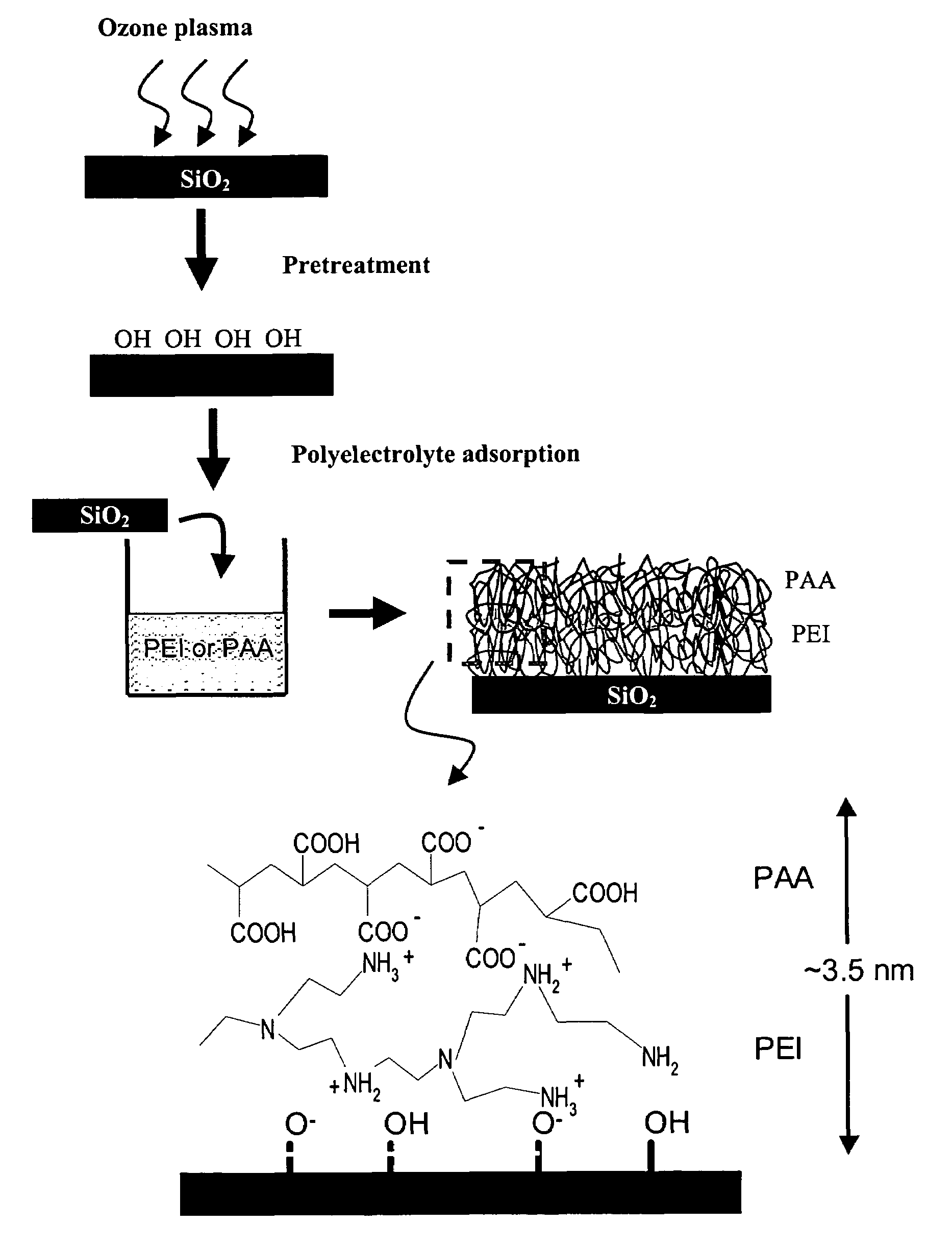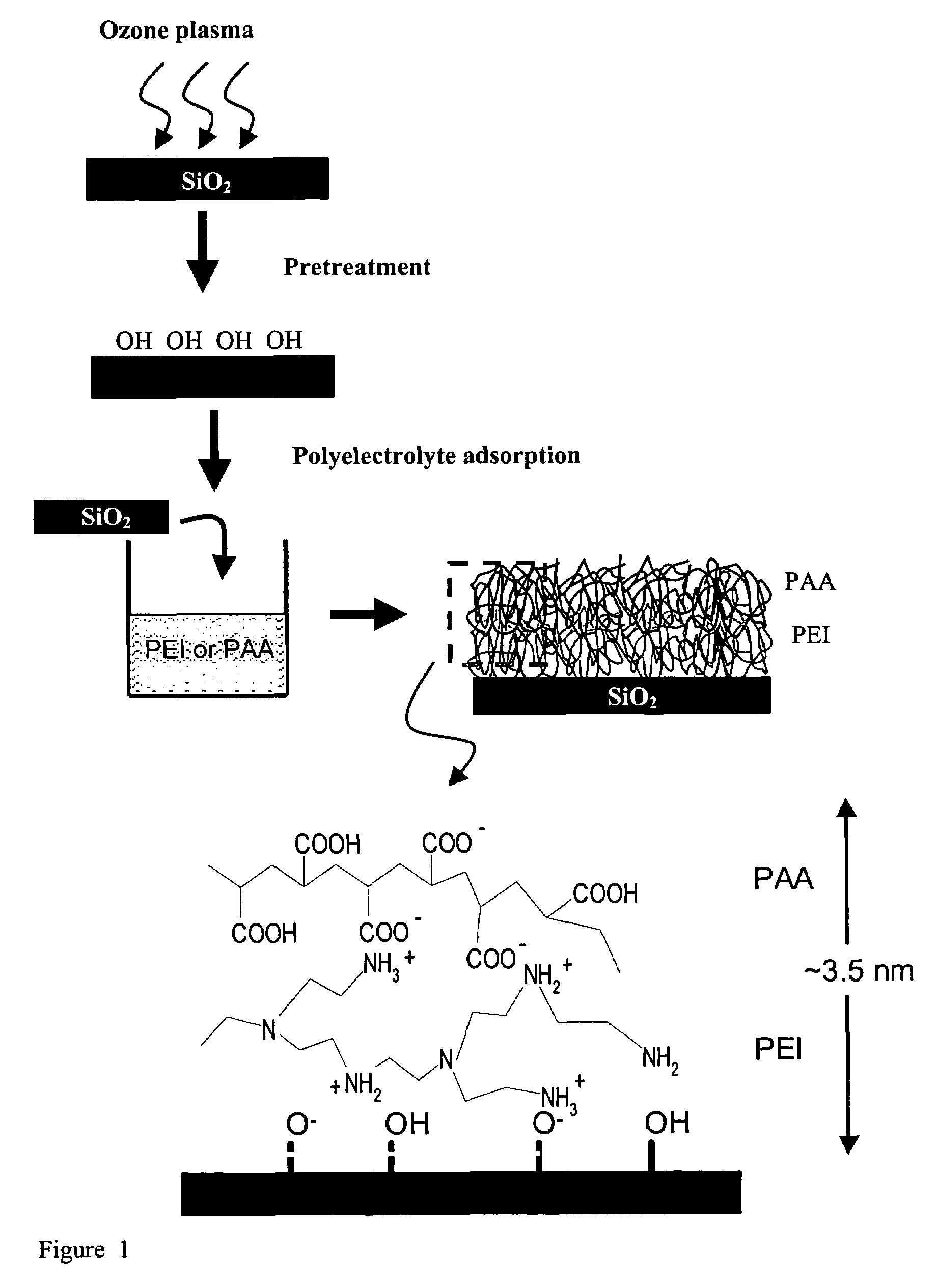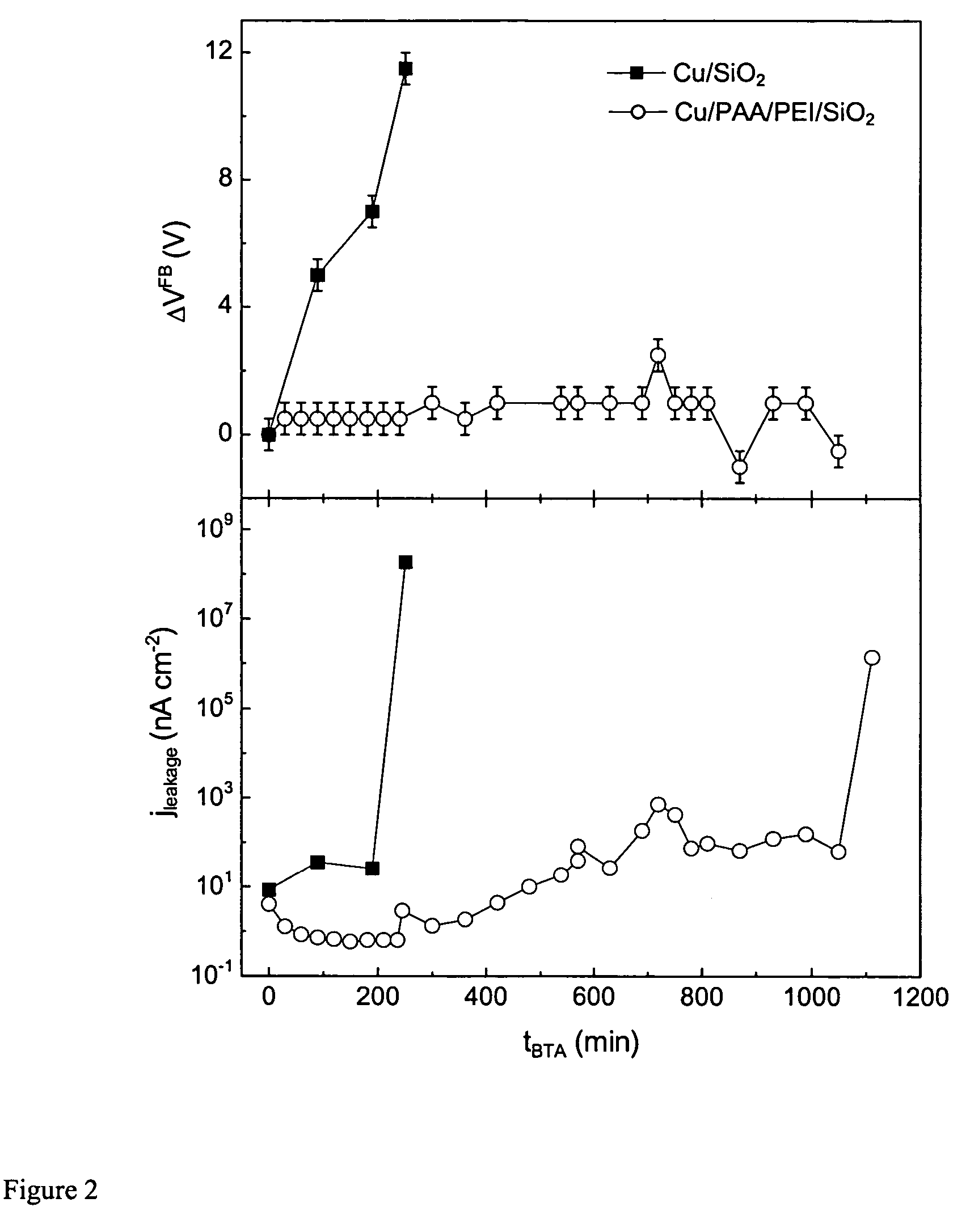Polyelectrolyte nanolayers as diffusion barriers in semiconductor devices
a technology of polyelectrolyte nanolayers and semiconductor devices, applied in semiconductor devices, semiconductor/solid-state device details, electrical apparatus, etc., can solve the problems of increasing operating speed, shrinking dimensions, and copper diffusion rapidly in silicon, silicon dioxide and other low-k materials, and achieve the effect of improving the adhesion of the conductive layer to the substra
- Summary
- Abstract
- Description
- Claims
- Application Information
AI Technical Summary
Benefits of technology
Problems solved by technology
Method used
Image
Examples
examples
1. Substrates and Preparation
[0044]The substrates used with the present invention may be any low k semiconductor material. The work described below employed n-type device-quality Si(00) (i.e. a silicon wafer) capped with an 85-nm-thick dry thermal oxide. Each wafer was successively rinsed ultrasonically in acetone, methanol and DI water. A 500-nm-thick Al layer was sputter-deposited in a 5 mTorr Ar plasma after stripping the back oxide with HF, and annealed at 450 ° C. for 1 hour in a 10−6 Torr vacuum for ohmic contact formation.
[0045]FIG. 1 shows a schematic diagram of the sample preparation procedure. The substrates were hydroxylated by exposure to an ozone plasma for 30 minutes at room tempearature to hydroxylate the substrate prior to polyelectrolyte adsorption.
[0046]The SiO2 coated, pre-treated substrate is subjected to coatings of polycationic PEI and polyanionic PAA. The adsorption of these layers onto the substrate results in a PEI layer immediately contacting the SiO2 and a...
PUM
 Login to View More
Login to View More Abstract
Description
Claims
Application Information
 Login to View More
Login to View More - R&D
- Intellectual Property
- Life Sciences
- Materials
- Tech Scout
- Unparalleled Data Quality
- Higher Quality Content
- 60% Fewer Hallucinations
Browse by: Latest US Patents, China's latest patents, Technical Efficacy Thesaurus, Application Domain, Technology Topic, Popular Technical Reports.
© 2025 PatSnap. All rights reserved.Legal|Privacy policy|Modern Slavery Act Transparency Statement|Sitemap|About US| Contact US: help@patsnap.com



